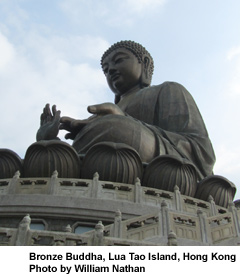

Zen Heritage
A Living and Unfolding Path
The practice of Zen at Clear Mountain is fully respectful of the great traditions and rituals that have accumulated in the wake of Zen�s wave-like movement throughout the eastern world. However, in keeping with with the inspirations inherent to Zen and with the better part of our western heritage, it is also integrative, ecumenical and dynamic in its application of those great traditions.
At Clear Mountain we offer the path of seeking awareness and mindfulness, one that integrates both body and mind, as well as individual and community. We rely on the authority of the teacher, while respecting the sacred role of the student. We include those of many different backgrounds and faiths, including those who believe in God and those who don�t. We preserve the ancient, while embracing the modern. In sum, we are an integral part of an exciting, dynamic process set in motion over a half-century ago in our nation, as a growing Zen movement interacts with and enriches our American culture.


An Ancient Tradition
Certain things can be said of Zen as to help satisfy the western mind�s craving for emprical facts. Zen has a rich history. The historical Buddha lived and taught in India in the 5th century BCE, and in the following centuries his teachings spread. Through traveling sages like Bodhidharma (of the early 5th century CE), the spirit of the Buddha was kept fresh from institutionalization along Buddhism�s frontiers. A nascent, emerging movement emphasizing direct experience over scriptural study reached China and evolved as a "school" by the 7th century CE.
Japanese visitors to China studied this evolving Ch'an Buddhism and brought it back to their own land beginning in the 12th Century CE. Dogen, of course, was one of the notable early masters, founding the Soto school of Zen in the early 13th Century. As Buddhism continued its eastern pilgrimage, it absorbed much of its surrounding context, taking much of value from Taoism and Shintoism. However, it maintained its strong emphasis on the role of meditative sitting, and on the role of the teacher in passing down its lessons and ways (versus the reliance upon written scriptures more typical of Hinduism and western religions).
Public interest in Zen practice blossomed in the United States in the 1960s, facilitated by a group of master teachers and priests who arrived from Japan. The culture of Japan is thus deeply embedded in our practice at Clear Mountain. Many aspects of our zendo decoration and our ceremony trace their inspiration directly to Japan. We thank and honor the Japanese people for their gift to us by continuing to mindfully respect their culture in our practice.

Clear Mountain Zen Center
80 Pompton Ave
Verona, NJ 07044

| © Clear Mountain Zen Center Design by Iron Spider |
